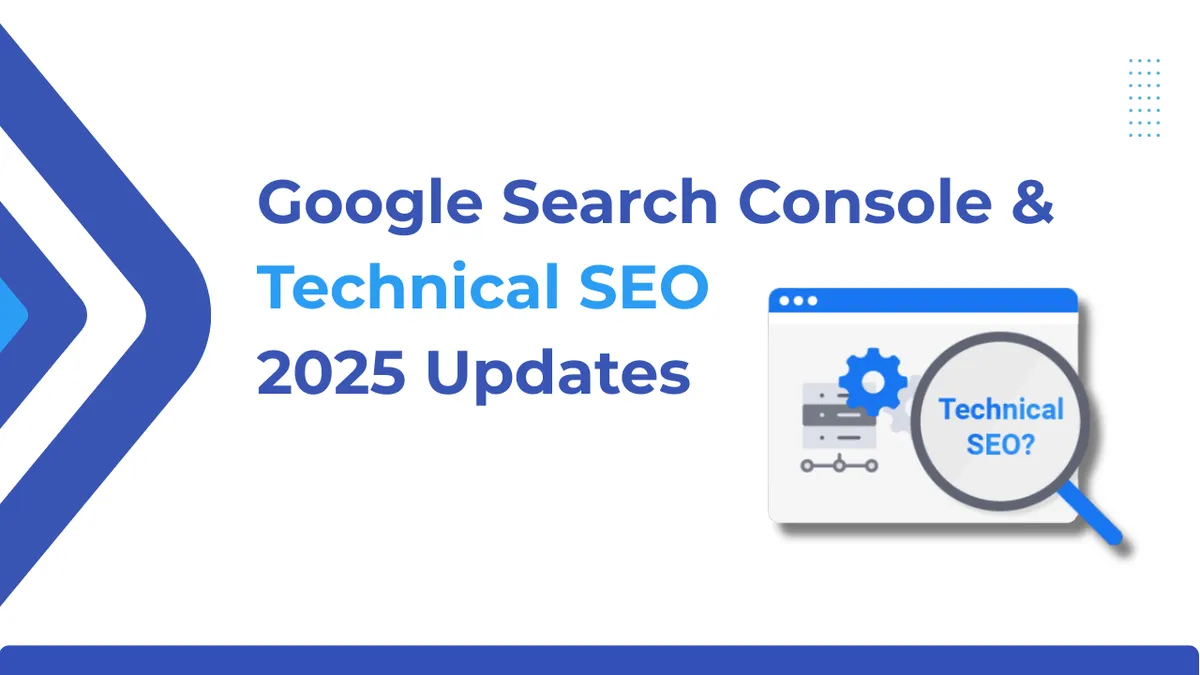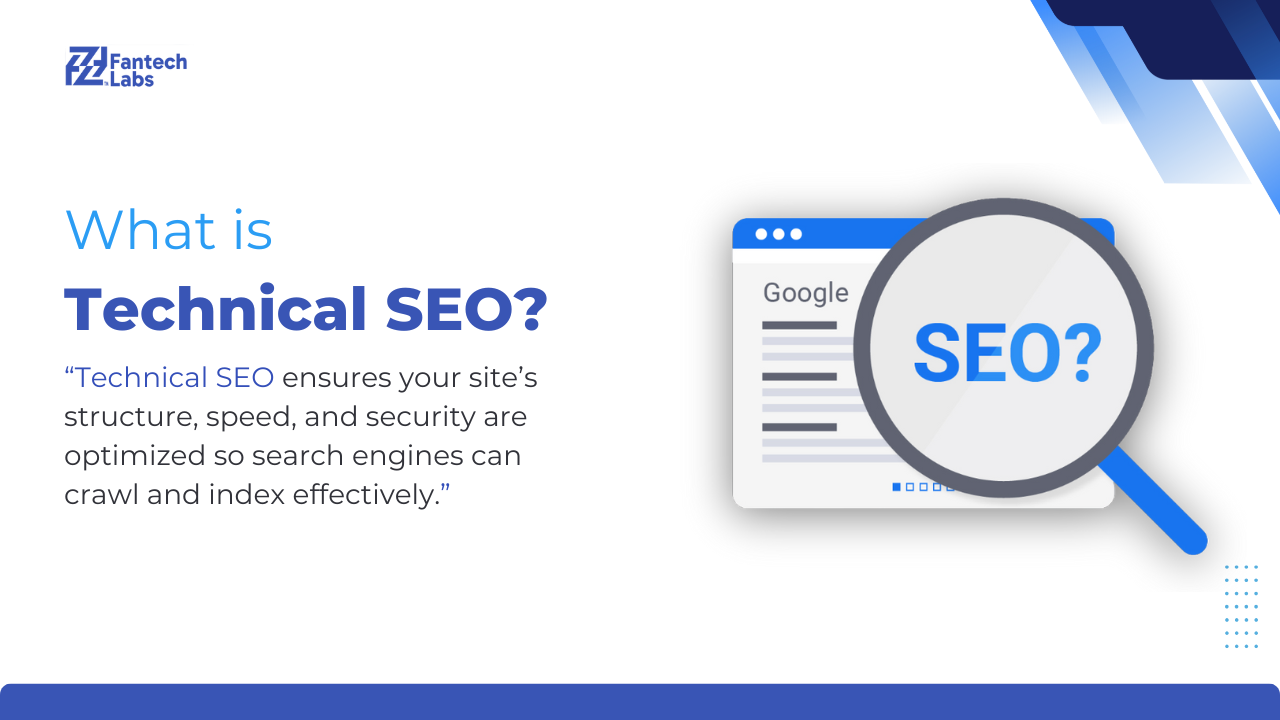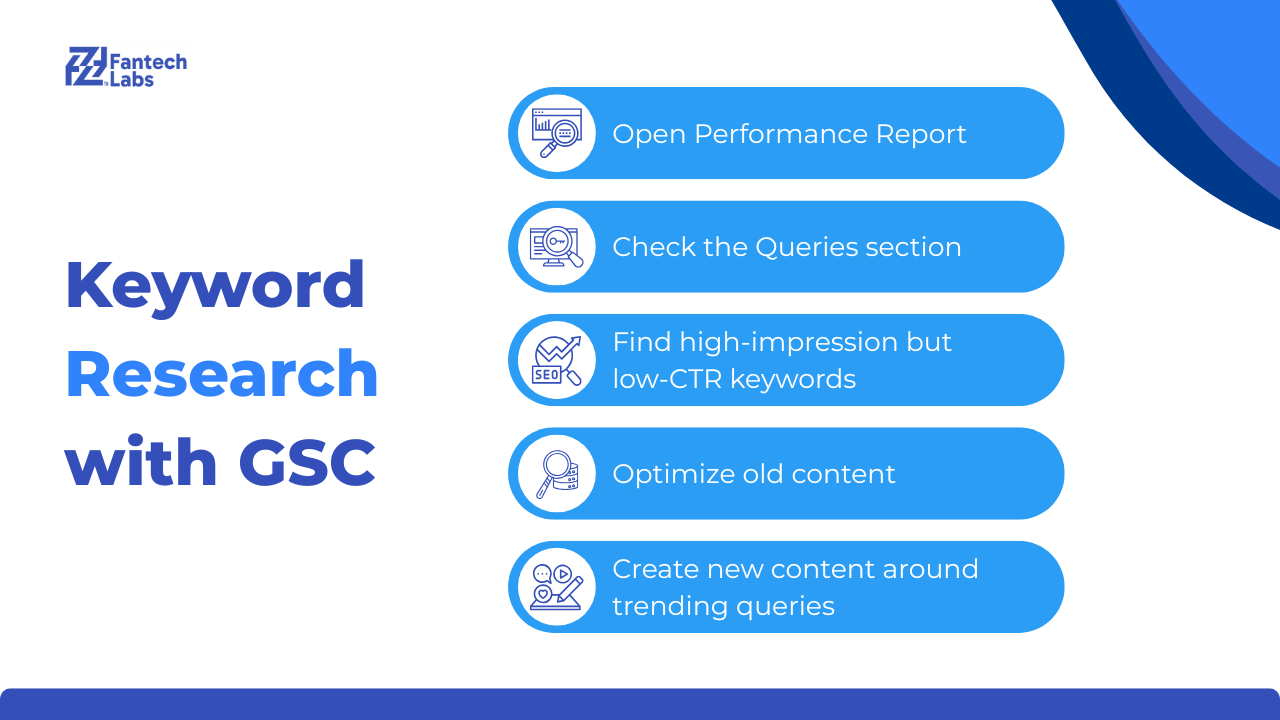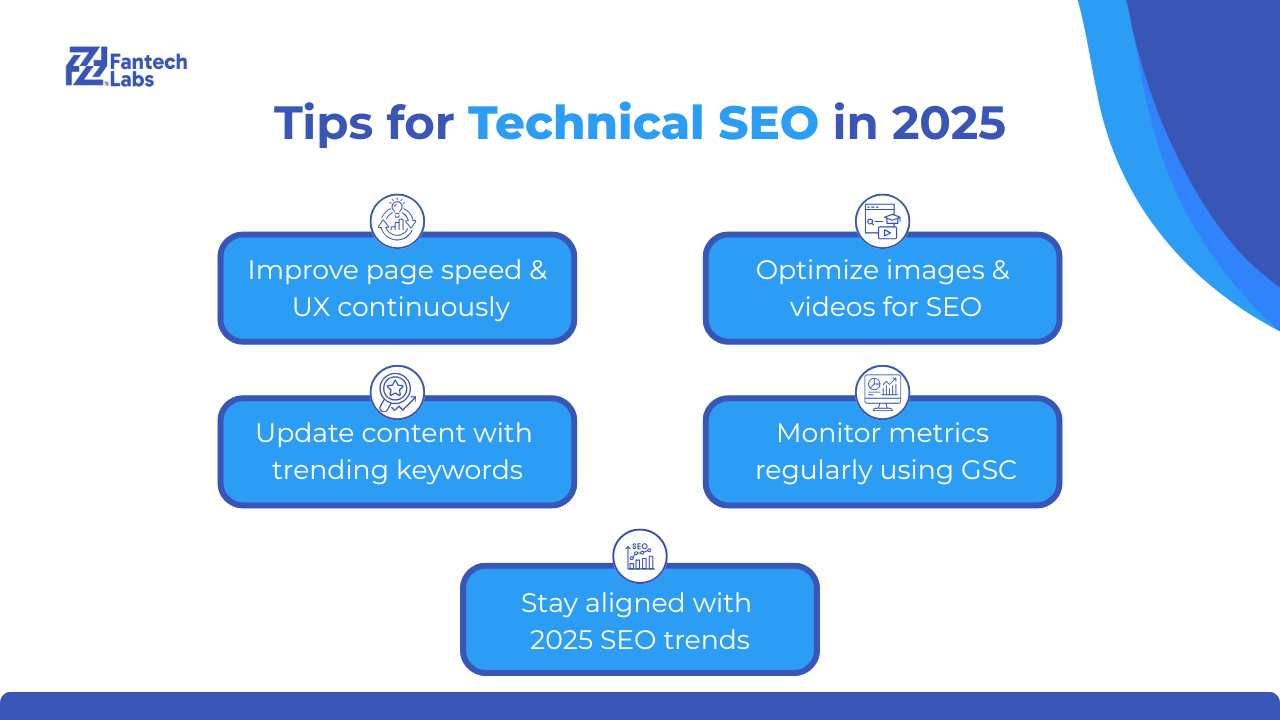Google Search Console & Technical SEO 2025 Updates
Stay ahead in 2025 with the latest Google Search Console & technical SEO updates. Learn how to track, audit, and optimize your site for better rankings.

Updated July 2025
Introduction
Why Google Search Console & Technical SEO Matter
In the ever-changing world of digital marketing, simply publishing content is no longer enough. Search engines like Google estimate your website in multiple situations, from the quality of your content to the technical health of your site. This is where Google Search Console and Specialized SEO come into play. Google Search Console( GSC) acts like a health monitor for your website. It helps you track your performance and optimize your site for better visibility. On the other hand, Specialized SEO ensures that your website is well-structured and easy for search engines to crawl and index. In this comprehensive companion, we’ll walk you through specialized SEO practices, how to use Google Search Console for keyword research, and how to conduct a technical SEO examination with Google Search Console to maximize your rankings.
What is Google Search Console?
Google Search Console is a free tool offered by Google to help website owners cover, maintain, and troubleshoot their site’s presence in Google Search results. It gives you access to precious perceptivity like search queries that bring guests to your point runners with the topmost prints and clicks. Technical issues affecting your point Mobile usability problems index content and crawl. With GSC, you can ensure that Google can piece together your content, understand it, and display it correctly to the right audience.

What is Technical SEO?
Technical SEO refers to the process of optimizing your website’s structure so search engines can crawl and index it effectively. While content and backlinks focus on what’s on your point, technical SEO focuses on how your point works. It includes Website speed optimization, Mobile-friendly design, secure browsing with HTTPS XML sitemaps and robots.txt, Structured data( schema luxury), and barring broken links and redirect issues. Without a strong technical foundation, indeed, the vague content won’t perform well in search rankings.
Technical SEO Practices
There are also some technical SEO practices to improve your site’s visibility:
a) Optimize Website Speed:
A slow website frustrates Google and other search rankings. Use tools like Google, PageSpeed, Perceptivity, or GT Metrix to identify speed backups.
b) Ensure Mobile-Friendliness:
With Google’s mobile-first indexing, a responsive design is a must-have. Test your site thoroughly and ensure it aligns with the regulatory SEO rules.
c) Secure Your Website with HTTPS:
Google gives preference to secure websites. Make sure your point uses an SSL certificate.
d) Produce an XML Sitemap:
An XML sitemap informs search engines of your important pages. Submit it via Google Search Console.
e) Fix Bottleneck crimes:
Examiner GSC’s Coverage Report to identify and fix crawling issues like 404 errors and redirect circles.
f) Use Structured Data:
Schemas help search engines better understand your content and enhance search practices.
g) Avoid Duplicate Content:
Use canonical tags and ensure harmonious URL structures.
Further Reading: To see how these technical tips can be applied to prepare for a major sales event, check out our guide on essential website upgrades for Black Friday.
Google Search Console Features
Help in Specialized SEO, Google Search Console offers multiple features that directly support technical SEO sweats. The Performance Report shows clicks, prints, CTR, and average position. URL Inspection Tool Tests how Google sees a specific runner. Coverage Report lists indexing issues and barred runners. The Sitemaps Section allows you to submit XML sitemaps. Mobile Usability Report Detects mobile-specific problems. Core Web Vitals Report tracks loading speed, interactivity, and visual stability.

How to Use Google Search Console for Keyword Research
Keyword research isn’t just about guessing what Google searches for; GSC gives you real data about the keywords driving business to your site. Go to the Performance Report in GSC. Sludge by Search Type Web. Check Queries to see the keywords your point is ranking for. Identify keywords with high print but low CTR; these are openings for improvement. produce or optimize content around these keywords. This is an excellent way to upgrade your SEO strategy using factual and authoritative Google search data.
Step-by-Step Technical SEO audit with Google Search Console
Step 1: Add the right property type in Google Search Console
Quick steps on how you can use this:
GSC → Add property → choose Domain (enter main domain) → Next, verify DNS → repeat with URL-prefix (enter full URL for a specific page) → Then, verify.
How to use the best technical SEO practices:
- For full-site visibility, you can add a “Domain Property”
- Also, add any relevant URL prefixes that you want to analyse separately.
- This enables you to validate results at two levels: section-level (URL-prefix) and site-wide (Domain).
Step 2: Check Indexing in Google Search Console
Follow these steps and check if you found any issues, so you can easily fix them.
- Go to GSC → select Indexing → go to Pages → review status → export any errors and do an analysis → use URL Inspection for key URLs → fix and request indexing.
How to use them for audits (best practice):
- You can always start with the Domain property site-wide Index Coverage Report.
- Next use, URL Inspection for critical sections (e.g., /services/, /blog/).
- List the URLs that need to be indexed but aren't. Check for on-page quality, canonical tags, and crawlability.
Step 3: Review Core Web Vitals and Runner Page Performance
Step-by-Step Guidelines.
- Check Core Web Vitals in GSC or PageSpeed Insights → Analyze Runner Page Speed → Evaluate User Experience (UX) Criteria → resolve Performance Issues → ReTest and Monitor
How to Use Them for Audits:
- Focus on key runner pages that drive traffic.
- Measuring Core Web Vitals using GSC and PageSpeed Insights.
- Identify performances and fix UX issues.
- Retest pages and monitor metrics, documenting improvements.
Step 4: Fix Mobile Usability Issues:
Step-by-Step Guidelines:
- Audit Pages → Document Issues →Apply Fixes → Test Across Devices →
- Monitor and check regularly
How to Use Them for Audits:
- Audit pages for mobile usability issues using the GSC Mobile Usability Report or many other browser tools.
- Find issues like overlapping text, elements that are not responsive, like buttons, or layout problems
- Apply fixes: adjust responsive layouts, optimize pictures, and fix overlapping text.
- Test pages on multiple devices and browsers to confirm mobile-friendliness or not.
- Monitor and check regularly to maintain a consistent and smooth mobile UX.
Step 5: Submit XML Sitemaps.
Step-by-Step Guidelines
Streamline Sitemap → Submit to GSC → Verify and check Status → Update Regularly →Monitoring & controlling
How to Use Them for Audits:
- Keep your XML sitemap streamlined, and involve only relevant URLs.
- Submit the sitemap to Google Search Console(GSC ).
- Verify sitemap status and make sure all pages are indexed.
- Check or update the sitemap when new pages are added or removed.
- Check regularly for defects or monitor errors present in GSC.
Step 6: Monitor Security issues.
Step-by-step guidelines
Run PageSpeed / Lighthouse / GSC →Analyze runner speed→ Check UX→Document issues
How to Use Them for Audits:
- Check GSC Security Issues for malware or hacked content.
- Address warnings like mixed content and HTTPS issues.
- Keep CMS, plugins, or software updated.
Step 7: Track Performance Metrics.
Step-by-step guidelines
Monitor high- and low-performing pages → Spot ranking drops or traffic changes → build data-driven recommendations
How to Use Them for Audits:
- Identify clicks, impressions, or monitor rankings in GSC.
- Monitor and check key actions like prints or downloads.

Tips for Technical SEO in 2025
Use the latest high-ranking keywords in your content to update and get verified; it will enhance user experience. Use Video & Image SEO to optimize multimedia with alt text and structured data. Regularly Update Old Content. Keep information fresh and applicable.
Conclusion
Consistency is the key to SEO learning Google Search Console and technical SEO isn't a one-time task, basically, it’s an ongoing process. By following technical SEO best practices, using GSC to search for keywords, and conducting regular checks, you can believe that your website will be competitive in search rankings. Stay visionary, keep learning, and cover trusted sources. All these efforts will highly impact advanced rankings, enhance the user experience, and grow or increase organic business.
FAQS
Q1: What is Google Search Console, and why is it important?
Google Search Console is a free tool that helps to improve the performance of your website, index status, and resolve all technical issues. It’s quite important because it allows you to improve your site’s ranking.
Q2: What’s the difference between Technical SEO and On-Page SEO?
Technical SEO pays heed to a website’s structure and backend optimization, such as website speed and mobile-friendliness. SEO focuses on optimizing content, headings, and keywords that are in your site’s pages.
Q3: What are the best practices for Technical SEO?
- Improve website speed.
- Use a mobile-friendly design.
- Enable HTTPS security.
- Create and submit an XML sitemap.
- Fix crawl errors.
- Add structured data (schema markup).
Q4: How can I do keyword research using Google Search Console( GSC)
In Google Search Console, go to the Performance Report and then select the Queries section. You’ll find the keywords in your site that are currently ranking for. Target high-impression but low-CTR keywords for good results.
Q5: How do I use Google Search Console for a Technical SEO Audit?
- Verify your site in GSC.
- Check the Index Coverage report.
- Review Core Web Vitals.
- Fix Mobile Usability issues.
- Submit your XML sitemap.
- Resolve any security issues.
Q6: How does Fantech Labs help you with Technical SEO best practices?
Fantech Labs helps you get discovered by Google and all other things that enhance your website’s performance, such as Page loading speed optimization, interaction, response time, and visual stability, all of which impact user experience.
Q7: Why choose Fantech Labs?
Fantech Labs helps your website rank better on Google and makes it user-friendly. It makes your site easy to use, fast, and secure, always helping you attract more visitors and also helps to grow your online presence.
About the Author
Written by Faraz Aslam, Digital Marketing Expert at Fantech Labs
As a Digital Marketing Expert at Fantech Labs for over three years, Faraz Aslam specializes in SEO optimization and website performance improvement. With deep expertise in Google Search Console (GSC), he helps businesses conduct technical SEO audits and leverage keyword data to build strategies that improve search rankings and enhance user experience.
Connect with him on LinkedIn.
